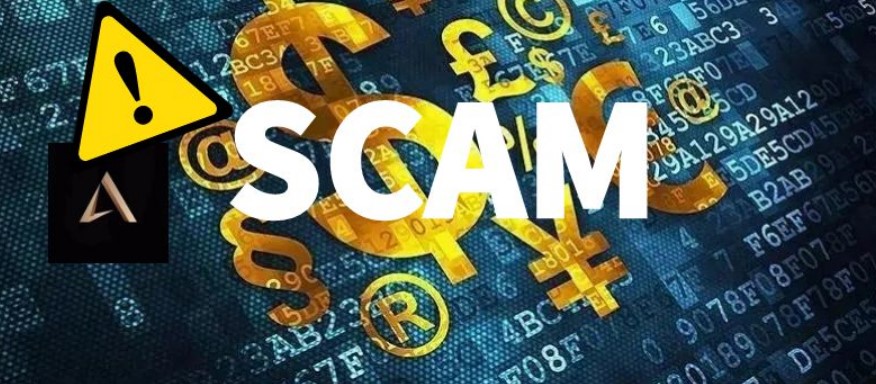CapitalTradex.net Scam -Freedom Promises, Frustration Deliveries
The Beginning: A Perfect Pitch for the Modern Trader
It started the way most online trading dreams do: a flashy ad, a promise of financial freedom, and the irresistible phrase “Start trading like a pro in minutes.”
That’s the pitch that lured thousands toward CapitalTradex.net, a self-proclaimed “revolutionary trading hub” offering high-speed forex, crypto, and stock investments.
The site looks impressive — all sharp graphics, live charts, and glowing testimonials.
At first glance, it feels professional, even trustworthy. But under that slick surface lies something far less glamorous — a blueprint for manipulation, designed to make you believe you’re investing in your future when you’re actually funding someone else’s scam.
This is the story of how CapitalTradex.net built a house of cards that looked like opportunity — and why so many didn’t see the cracks until it was too late.
The Hook: “You Can Start Small and Watch It Grow”
The first thing that grabs you on CapitalTradex.net isn’t its design — it’s the tone. The platform doesn’t push too hard. It feels casual, friendly. There’s no technical jargon, no intimidating graphs — just simple messages like:
“Trade smarter. Earn faster. Withdraw anytime.”
That last promise — withdraw anytime — is a psychological anchor. It gives people the illusion of control, which is exactly what scammers want.
Once you register an account, a representative reaches out — fast. Sometimes within an hour. They introduce themselves as your “personal trading consultant,” someone who’ll “guide you toward consistent profits.”
They sound credible. They know just enough about markets to keep you hooked. And they start small — suggesting a modest $250–$500 initial investment. “Start low,” they say. “Watch how fast it grows.”
And sure enough, it does grow — on the fake dashboard, that is.
The Dashboard Illusion
After you deposit your money, CapitalTradex.net gives you access to a trading dashboard. It looks professional, filled with real-time charts and green numbers moving upward.
Within hours, your balance shows profit. You might have “earned” $150 overnight. Your account manager congratulates you:
“You’re a natural. If you increase your capital, your returns will scale up even faster.”
It feels good. You’ve made money — or so you think. That feeling of momentum is powerful, and that’s precisely why it’s engineered into the scam.
But here’s the truth: those profits don’t exist.
The platform’s “live trading feed” isn’t real. The numbers are manipulated by the backend system to simulate market success. The dashboard is a performance, not a portfolio.
The Next Step: More Money, More Promises
Once the initial confidence sets in, the persuasion begins. The account manager starts suggesting that you “upgrade” to a better plan.
They might say:
“We’re about to open a high-yield crypto cycle — limited access for early investors.”
or
“Your current account level caps your profit rate. If you deposit $5,000, we can move you into our Premium Tier.”
They’re trained to make you feel like you’re missing out if you don’t act fast.
If you hesitate, they might even send you screenshots of “other clients” who supposedly doubled their investments.
But those clients don’t exist — and those screenshots are as fake as the profits on your dashboard.
The Turning Point: When Withdrawals Go Missing
Most users report that things feel fine — until they try to withdraw.
That’s when the tone changes.
Instead of your friendly advisor, you now get automated replies. Your withdrawal is “pending verification.” Then “under review.” Then “temporarily delayed due to liquidity protocols.”
Each email sounds official, but the money never comes.
If you press further, you might get a call asking for one last deposit to “unlock” your funds.
That’s the scam’s final squeeze — an attempt to extract whatever’s left of your trust and your wallet.
Behind the Scenes: How the Scam Really Works
CapitalTradex.net doesn’t operate like a real brokerage.
There are no traders, no market connections, and no regulated banking channels.
Instead, it runs on a two-part deception system:
-
Frontend façade:
The website, dashboard, and fake trading interface — designed to look legitimate. It’s all simulated, with no access to actual market APIs. -
Backend network:
A team of remote “brokers” or “agents” who handle communication. They’re skilled in persuasion and fluent in multiple languages. Their goal is to keep you invested emotionally — and financially.
Deposits go directly into crypto wallets or offshore processors controlled by the scammers.
Withdrawals, of course, never happen.
Red Flags That Expose CapitalTradex.net
Even without deep financial knowledge, a few telltale signs give away the scam:
-
No Regulatory License
There’s no evidence of authorization from financial watchdogs like the FCA, ASIC, or CySEC. Any broker operating without one is unaccountable — and that’s exactly what they count on. -
Hidden Ownership
The site lists no parent company, no physical address, and no real contact information.
The domain registration uses privacy masking to hide ownership details. -
Copycat Website Structure
The design and text are nearly identical to other known scam platforms, including the same testimonials and “profit charts.” -
Aggressive Follow-Ups
Victims often report being harassed with daily calls after initial sign-up. When one number is blocked, another appears. -
Withdrawal Excuses
The ultimate red flag — if you can deposit instantly but can’t withdraw easily, it’s not a trading platform. It’s a trap.
The Victims’ Stories: A Pattern of False Hope
The most striking part of CapitalTradex.net’s operation is how similar the victims’ experiences are.
Case 1: “John, 47, from California”
“I started with $300. The first week, my balance said $720. I thought I was finally getting somewhere. When I tried to withdraw just $100, they told me I needed to ‘verify my account’ with another $250 deposit. That’s when I knew I’d been fooled.”
Case 2: “Elena, 33, from London”
“My so-called advisor called me every day, even on weekends. He convinced me to add more, saying I’d miss the ‘crypto boom.’ When I asked to cash out, they said my funds were locked until the end of a trading cycle. That cycle never ended.”
These stories show the same pattern: small wins, growing trust, escalating deposits, and sudden silence.
Why It Works: The Psychology Behind the Pitch
CapitalTradex.net isn’t sophisticated because of its technology — it’s sophisticated because of its psychology.
It preys on emotion, not logic.
-
Greed: The promise of easy money makes skepticism fade.
-
Trust: The professional tone and fake dashboards create credibility.
-
Fear of missing out (FOMO): Limited-time offers push impulsive decisions.
-
Embarrassment: Once victims realize the truth, many stay silent out of shame.
Scammers understand these reactions intimately — they exploit them in carefully scripted stages.
The entire structure isn’t designed to teach trading. It’s designed to teach you to believe.
A Digital Shell Game: The Disappearing Act
Like many scam platforms, CapitalTradex.net won’t last long under its current name.
Once enough complaints surface or watchdogs flag it, the domain will vanish overnight — replaced by another nearly identical site with a new name and color scheme.
Sometimes, the same scammers even reach out again months later, pretending to be “recovery agents” or “regulators” offering to help victims get their funds back — for another fee.
It’s a vicious cycle, and CapitalTradex.net is just one face in a rotating network of fraudulent trading operations.
The Broader Impact: Why This Scam Matters
Beyond individual losses, scams like CapitalTradex.net corrode public trust in legitimate trading innovation.
Every fake platform that collapses makes real brokers, crypto exchanges, and fintech startups fight harder to regain credibility.
It also amplifies fear among small investors — the very people who could benefit from honest financial education.
By pretending to democratize trading, CapitalTradex.net ends up doing the opposite: it weaponizes access, turning opportunity into exploitation.
The Takeaway: What CapitalTradex.net Really Represents
CapitalTradex.net sells a fantasy — one built on urgency, emotional manipulation, and digital illusion.
Its polished design hides a crude reality: there’s no trading, no profits, and no transparency.
The site’s entire operation is a modernized version of the oldest scam in the book — the promise of something for nothing.
Every fake number on its dashboard, every smooth voice on its phone lines, every reassuring email — they’re all parts of the same performance.
Once the curtain drops, all that remains is frustration, regret, and the realization that the freedom it promised was never financial — it was psychological.
Final Thoughts: Always Look Beyond the Interface
If CapitalTradex.net teaches one lesson, it’s this: the internet makes deception look professional.
A well-designed website can look more convincing than a licensed firm if it tells people what they want to hear.
Real financial growth doesn’t come from clicking “invest now.” It comes from caution, verification, and a refusal to trust appearances.
And in the case of CapitalTradex.net, the only thing that grew was the illusion.
Report CapitalTradex.net Scam and Recover Your Funds
If you have lost money to CapitalTradex.net, it’s important to take action immediately. Report the scam to Jayen-consulting.com, a trusted platform that assists victims in recovering their stolen funds. The sooner you act, the better your chances of reclaiming your money and holding these fraudsters accountable.
Scam brokers like CapitalTradex.net continue to target unsuspecting investors. Stay informed, avoid unregulated platforms, and report scams to protect yourself and others from financial fraud.
Stay smart. Stay safe






